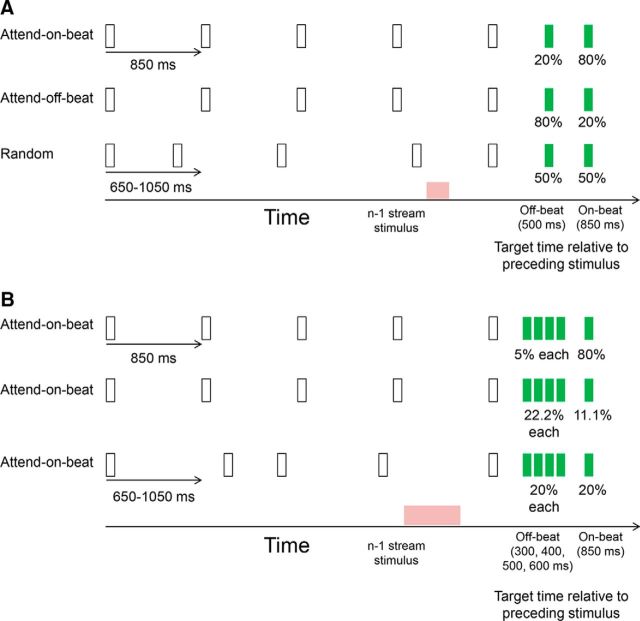Figure 1.
Experimental paradigm. A, Experiment 1. Participants detected targets (green stimulus) that followed a stream of visual stimuli (white stimuli). The percentage under the targets stimuli indicates the probability that a target appeared at that time point in the corresponding condition. In the attend-on-beat condition, the stream was rhythmic with targets more probable on beat; in the attend-off-beat condition, the stream was rhythmic with targets more probable at a fixed off-beat position than at an on-beat position; and in the random condition, the stream intervals were jittered, making the stream less rhythmic, and targets had identical probability to appear at matched intervals to those of the rhythmic conditions. B, Experiment 2. Task design was identical to that of Experiment 1, except for having four equally probable possible times for off-beat targets. In both experiments, only the fast-stream condition (short-stream SOA with an average stream interval of 850 ms) is presented for simplicity. Pink patches indicate the interval for analysis of anticipatory brain activity before the expected off-beat target time, between the n − 1 and the n stream stimuli (demonstrated here between fourth and fifth stimuli).

